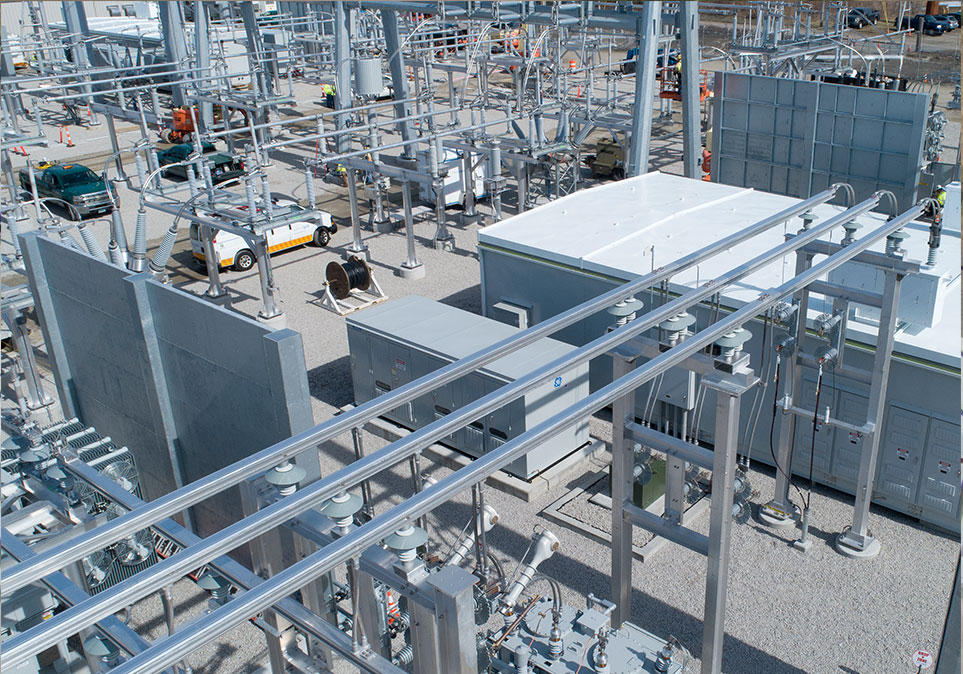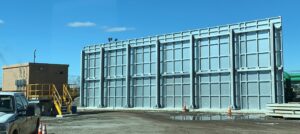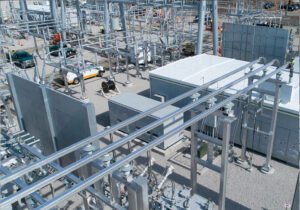Fire Damper vs. Smoke Damper
Fire protection in industrial and manufacturing plants is essential to manage fire accidents and prevent extensive property damage. There are two main types of fire protection systems: passive and active. Active fire protection involves detailed systems designed to put out the fire, like sprinklers. Passive fire protection techniques like a firewall barrier, a fire damper, and a smoke damper help prevent toxic gas and smoke from spreading across the building.
A fire damper is an important passive fire protection device. It is commonly found in air conditioners, heating, and ventilation systems. It automatically activates when the heat from fire increases the temperature of a room to about 165 degrees Fahrenheit. It automatically creates a barrier upon detecting excessive heat. The heat melts the link attached to the damper and causes its door to close. A fire damper’s main job is to control and prevent the spread of fire from one section to another, creating a fire-rated separation. It is designed to handle high temperatures. Fire dampers are of two main types:
Curtain Fire Damper: The curtain-type fire damper is the most commonly used damper. It consists of a curtain held in place with a link that can fuse easily. Curtain fire dampers are a type of static fire damper. They are usually installed in areas where the HVAC fan shuts down in case of a fire.
Multiple Blades: These fire dampers are similar to the control dampers. They come with blades that are placed in the air stream. The blades restrict the natural airflow. These fire dampers are used in places where the air velocity of the system goes over the closure ratings of the curtain-type fire damper.
A dynamic fire damper is another type of damper. It is typically installed on vertical barriers. The HVAC system fan in this damper continues to function even if there is a fire. As the fan stays on, the damper’s spring-loaded design helps it spring shut against air pressure.
What is a Smoke Damper?
Smoke dampers work similarly to fire dampers. However, they preserve the integrity of the smoke barriers like walls and the floor. They are also placed within ventilation ductwork and air conditioning. Like fire dampers, these dampers help building occupants escape a fire and help firefighters get easy access to the building. Smoke dampers don’t have the same temperature restrictions as fire dampers. They have two main functions:
- As a part of a passive smoke system, they are activated by smoke detectors situated in the duct. They close as the smoke gets detected and prevent circulation through the duct or the ventilation opening.
- Use walls and floors as barriers to control the migration of smoke.
Smoke dampers can close either by a pneumatic, electronic, or spring actuator. You can reset them manually or force them open with a resetting signal. They don’t have to be installed in sleeves and can be installed directly into the duct. However, you must seal the joints between the duct and the damper frame to prevent air leakage.
Combination Smoke and Fire Dampers
Combination dampers perform the role of both fire and smoke damper. They are typically used in HVAC systems where the ceiling, wall, or floor needs fire and smoke dampers.
Difference Between Fire Dampers and Fire Smoke Combination Dampers
Unlike fire dampers that need fusible links, these combination dampers have electric heat release systems. These can be reset to control the damper’s closure to prevent it from slamming shut, leading to pressure problems in the HVAC unit.
Difference Between Fire Damper and Smoke Damper?
While both smoke and fire dampers perform similar functions, they are different structurally. Below are some of the differences between a fire and smoke damper:
Operation
Fire dampers work with a fusible device. These devices have a temperature measurement feature to indicate when the heat crosses dangerous levels. The device will cut the flames on reaching the maximum temperature. The damper also has a fusible melting link that holds the blade as long as it doesn’t melt. Once it reaches the melting point, the blades close and prevent the flames from moving any further.
Smoke dampers, on the other hand, work differently. You can operate them in two ways. One way is factory-installed electric motors, and another is a pneumatic actuator. Smoke dampers have both smoke and fire alarms. They also work in two ways; one is the passive smoke control system, and the other is the engineered smoke control system. The passive smoke control system goes off when it senses smoke. This prevents air circulation through the ventilation system. The engineered smoke control system controls smoke leakage by creating a pressure difference. It creates air pressure in the areas surrounding the fire, preventing the smoke from spreading.
Location
Fire dampers are typically located at the intersection of the ductwork of fire-rated barriers in a building. It secures the integrity of the barrier. It also retains the fire rating capacity of the floors and walls.
Smoke dampers are located next to smoke barriers. You should not install them more than 24 inches away from the smoke barrier. However, smoke dampers that isolate air handlers don’t have to be set up at this distance.
Other Differences
Due to thermal expansion, the space between the ducts and the damper frame is not sealed during fire damper installation. The other seams and breakaway connections can stay sealed.
However, the ducts and the damper frame joints should always be sealed in a smoke damper. This will prevent air leakage.
Both fire dampers and smoke dampers are a critical and integral part of a building’s passive fire protection system. They both have similar functions and are placed in similar locations. They help prevent the duct from becoming a weak point in a building’s fire safety provision.
https://firebarrierexperts.com/ offers innovative solutions to protect your critical infrastructure in case of fire. We have customized and modular fire and explosion solutions at several locations across the US. Our designs are easy to install and meet compliance requirements while saving you money and time.
Sinisi Solutions
75 Main St, Manasquan, NJ 08736
732-232-2100




